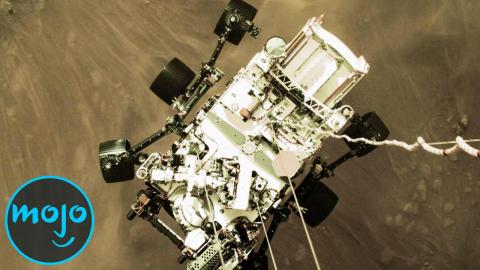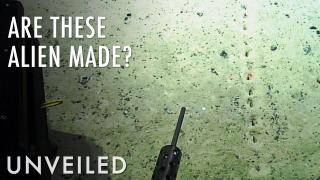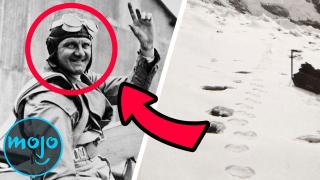Top 10 Mind-Blowing Images From Mars

#10: Dune & Ripples
This Is What Happens Next In Dune Messiah...
https://images.nasa.gov/details-PIA24036 Earth has plenty of deserts – in fact, they cover about a third of Earth’s land surface area. But there’s something extraordinary about seeing such beautiful sand dunes on another planet. This false-color image of a large dune in Proctor Crater was taken by the High Resolution Imaging Science Experiment camera aboard NASA's Mars Reconnaissance Orbiter, or MRO, in 2009. The color was added to show texture. Mars has many such dunes, some of them very different to what we have on Earth. The large ripples atop a dune in THIS mosaic [https://mars.nasa.gov/system/resources/detail_files/7879_mars-sand-dunes-PIA20755-full.jpg], which combines photos from NASA’s rover Curiosity in the Bagnold Dune Field, are unique to the Red Planet. NASA’s study of Martian dunes taught us that Mars does actually have wind, because the dunes change over time.
#9: Global Dust Storm
Is It Possible To Reverse Global Warming? | Unveiled
https://images.nasa.gov/details-PIA22487 Where Earth has hurricanes, Mars has ferocious dust storms that sometimes cover the entire planet. In 2018, one such storm prompted NASA to put its rover Opportunity into hibernation ; but once the storm cleared, it failed to reboot. It’s possible that dust had covered up its solar panels. The MRO, on the other hand, was able to capture a bird’s eye view of the extreme weather event. Thanks to its special vantage point, we have this spectacular image of Mars before and after the dust storm. During the storm, the planet’s surface was concealed by enormous dust clouds and dust towers, which can climb to 50 miles high. These photos are vital for understanding one of Mars’s biggest hazards.
#8: Tracks Left Behind
Did Scientists Just Discover Alien Tracks On The Ocean Floor? | Unveiled
https://images.nasa.gov/details-PIA18604 Opportunity roamed Mars for 15 incredible years, traveling a total distance of just over 28 miles. That might not seem like a lot, but for a slow rover like Opportunity traversing an alien planet, every foot was an incredible achievement. This picture was taken by Opportunity’s Pancam of the tracks the rover left in its wake in 2014, as it journeyed across the west rim of Endeavour Crater. A false color version shows more details. That same year, Opportunity’s younger sibling Curiosity took a similar photo as it left Dingo Gap inside Gale Crater. It’s extraordinary to sit here on Earth and look at these images, like postcards sent back from the Red Planet. And with the empty, Martian landscape stretching off in the background, they’re hauntingly beautiful.
#7: Korolev Crater
https://www.esa.int/ESA_Multimedia/Images/2018/12/Plan_view_of_Korolev_crater Mars has hundreds of thousands of impact craters, and some of them are truly astonishing. One of the most distinct is Korolev, named for Sergei Korolev, the rocket engineer who spearheaded the Soviet space program in the 50s and 60s. Located in the Red Planet’s northern polar plain, Korolev has a diameter of 50 miles and is filled with brilliant-white water ice. This particular image was taken in 2018 by Mars Express, a Mars orbiter operated by the European Space Agency. Using a digital terrain model, the ESA has also created an oblique view of the crater, and a breathtaking virtual flyover [https://youtu.be/z3fFOCPgNJk]. With so much attention on Mars’s ice and water, it’s no wonder these images strike a chord.
#6: Mount Sharp
Top 10 Creepiest Mount Everest Mysteries
https://images.nasa.gov/details-PIA19912 One of Mars’s weirdest peaks is Mount Sharp, or Aeolis Mons, which rests in the heart of the Gale Crater. For years, Mount Sharp has been something of a mystery to scientists, which is one reason Gale Crater was chosen as the landing spot for Curiosity. Curiosity didn’t disappoint. As well as finding evidence that Gale Crater was once a lake, the rover provided data that allowed researchers to estimate the density of Mount Sharp. Based on this, it seems the mountain may have been formed by Martian winds. This composite image of Mount Sharp was taken in 2015 as the rover looked out from the edge of the crater towards the bizarre mountain.
#5: Dust Devil
https://images.nasa.gov/details-PIA20012 It’s not just dust storms you need to worry about on Mars. Dust devils, which also appear in warm areas on Earth, have been spotted on the Red Planet many times – as have the tracks they’ve left behind. The Mars Reconnaissance Orbiter has snapped a striking picture of a dust devil from above. Curiosity was even able to produce a time lapse from multiple images. But there’s something magical about this image from Opportunity. This black-and-white shot was taken by the rover from the safety of a nearby ridge, and shows a distant dust devil winding its way through a valley.
#4: Martian Sunset
What Happens If We Heat The Martian Core? | Unveiled
https://solarsystem.nasa.gov/resources/2431/sunset-at-mars-gusev-crater-spirit/ NASA’s rover Spirit wasn’t as long-lived as its twin, Opportunity. But it still sent back some incredible images and information during its six year run. One of the most memorable is this picture of a Martian sunset taken in 2005, showing just how much further away the sun is on Mars than it is on Earth - appearing as a bright moon-sized speck in the distance. Spirit’s picture was taken from the Gusev crater right around dinnertime; certainly a great way to spend an evening. Five years later, Opportunity sent back its own surreal time lapse of a Martian sunset. In 2015, Curiosity continued the tradition!
#3: Curiosity’s Selfies
https://mars.nasa.gov/resources/25382/curiositys-selfie-at-the-mary-anning-location-on-mars/?site=msl It’s not just NASA scientists who get attached to Mars rovers; they’ve captured the public imagination for years. And none more so than Curiosity, who in 2012 sent back the first ever selfie on an alien planet! Yes, it’s upside down, but that’s easily forgiven. Since then, it’s sent back numerous, more polished selfies of its adventures. We might be cheating a bit by not choosing just one of them for this entry, but they’re all adorable! According to NASA’s Jet Propulsion Laboratory, it takes 86 separate images to create one panoramic selfie – which is why you never see its robotic arm in any of the shots.
#2: Valles Marineris
https://nssdc.gsfc.nasa.gov/image/planetary/mars/marsglobe1.jpg Mars has plenty of incredible geographical features. One of the most famous is Olympus Mons, the tallest planetary mountain in the solar system, and one of the largest volcanoes. As well as having mountains and volcanoes, Mars also has a vast and complex canyon system called Valles Marineris, first discovered by Mariner 9 in the 1970s. A later mission, Viking 1, was responsible in 1980 for producing a stunning mosaic image of Valles Marineris spreading across the Martian equator. Needless to say, the formation completely dwarfs Earth’s own Grand Canyon. Scientists continue to theorize about how exactly such a massive canyon system formed - whether from tectonic activity, liquid water, melting permafrost, or a combination. Before we unveil our top pick, here are a few Honorable Mentions: First Image From Mars’ Surface Taken in 1976 by Viking 1 https://www.jpl.nasa.gov/images/first-photograph-taken-on-mars-surface Sojourner After Landing in 1997, Pathfinder Took This Photo of its Rover Sojourner Image from Pathfinder - https://images.nasa.gov/details-PIA01120.html Murray Buttes Curiosity Snapped This Photo in 2016 on Its Way Up Mount Sharp Image from Curiosity - https://images.nasa.gov/details-PIA21044 Brand New Crater This Distinct, Very Recent Crater Was Discovered by the MRO in 2012 https://www.nasa.gov/jpl/mro/martian-impact-crater-pia17932 Northern Ice Cap Mars’s North Pole Comes to Life In This Image From the Mars Global Surveyor https://mars.nasa.gov/resources/3241/northern-ice-cap-of-mars/
#1: Perseverance’s Landing
There’s a reason that Mars landings are referred to as the “seven minutes of terror!” To touch down, landers must execute a complex sequence of maneuvers. Historically, about half of all Mars missions have failed. So it was with baited breath that people around the world waited for news of NASA’s Perseverance rover on February 18th, 2021. Not only did Perseverance, or “Percy”, touchdown successfully in Jezero Crater, it provided us with the first ever video footage of the landing - complete with Martian audio! Perseverance will hunt for signs of life in the crater, which used to be a lakebed. With its robot helicopter Ingenuity on board, we have a lot to look forward to!






